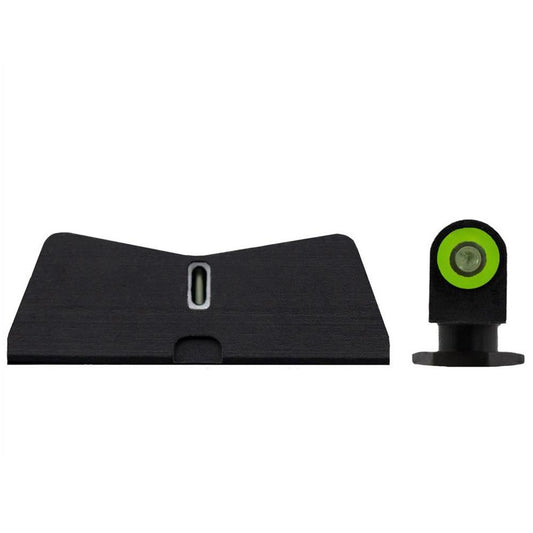

The XS Sights DXT2 Standard Dot Sight for Glock 17, 19, 22-24, 26, 27, 31-36, and 38 is a game-changer when it comes to aiming precision. With a tritium-powered front sight that glows in low-light conditions, you’ll hit your target with confidence, no matter when or where you are. You’ll appreciate the simplicity of the dot-the-‘i’ sight picture that ensures visibility and accuracy every single time you draw your firearm. Whether you're at the range or in a tactical scenario, this sight is built to keep you on point.
Constructed from durable CNC machined steel, the DXT2 sight is designed for the serious shooter who values reliability. The standard dot front sight measures 0.140”, making it easy to align and aim. Plus, the option for a high-contrast colored front sight enhances visibility even further. You can trust the DXT2 to fit standard holster options, streamlining your shooting experience.
Key Features:
- TRITIUM POWERED for enhanced visibility in low-light situations.
- STANDARD DOT FRONT SIGHT measures 0.140” for easy aiming.
- HIGH-CONTRAST FRONT SIGHT option to improve target acquisition.
- GLOW DOT absorbs ambient light and shines in darkness.
- LOW-PROFILE REAR SIGHT provides superior visibility of the front sight.
- SIMPLE DOT-THE-‘I’ sight picture ensures quick alignment.
- DURABLE MATERIAL with CNC machined steel for long-lasting use.
- 10 YEAR WARRANTY gives you peace of mind about your purchase.
Technical Specifications Table
| Feature | Details |
|---|---|
| Compatibility | Glock 17, 19, 22-24, 26, 27, 31-36, 38 |
| Material | CNC Machined Steel |
| Front Sight Size | 0.140" |
| Warranty | 10 Years |
What’s in the Box?
- DXT2 Standard Dot Sight
- Installation tools
- User manual
Customer Reviews
“This sight has transformed my shooting game. The tritium makes all the difference at night!”
“Installation was straightforward, and the accuracy is impressive. Highly recommend!”
FAQ
How does the tritium work in low light? The tritium in the front sight absorbs and stores ambient light, allowing it to glow in darkness without needing any external power source, making it perfect for any low-light conditions.
Is it easy to install? Yes! The XS Sights DXT2 comes with everything you need for a straightforward installation process, including detailed instructions to make it hassle-free.
Similar Models
Looking for more options? Check out our extensive range of XS Sights products, including the XS Sights DXT Standard Dot Sight for enhanced performance in diverse environments. Explore our full collection for premium sights tailored to your shooting needs!
You May Also Like
Here’s some of our most similar products people are buying. Click to discover trending style.






